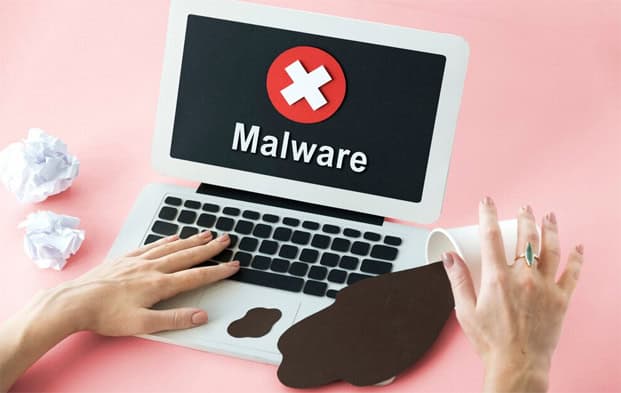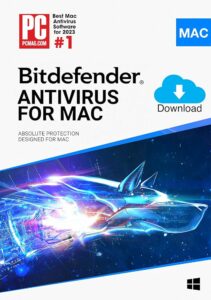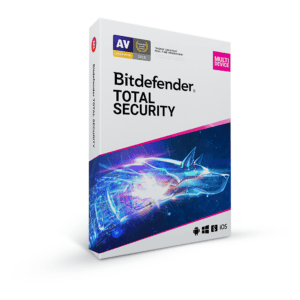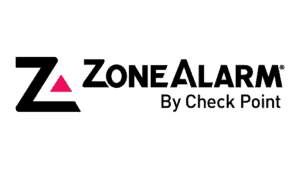
Best Malware Removal and Protection Software: What’s the difference between a Trojan, a bot, and a worm? Don’t worry; we’ll explain the different types of malware clearly. You definitely don’t want malware on your computer. What are your safety tips? Antivirus is essential, and a security suite provides extra protection. Some tools target specific tasks, like blocking spyware and ransomware. We’ve looked at more than 50 programs designed to combat malware. We tested these apps thoroughly to find the best ones, looking at different protection styles and methods. Check out our top picks and learn how to keep your devices safe from malware.
Top 10 Best Malware Removal and Protection Software for 2026
We tested over 50 anti-malware apps to help you find the best protection and removal software for your devices.
1. Avast One Basic
Protecting your devices from malware can be affordable. Avast One Essential is free to install on Windows, macOS, Android, and iOS devices. Four independent antivirus labs support Avast, giving it top scores. It also gets great ratings in our tests.
Avast offers some features for free, but keeps others for its paid Avast One security suite. The free edition offers many features, like ransomware protection, a basic firewall, and a VPN with limited bandwidth. macOS offers more than just the basics, including ransomware protection, browser cleanup, and a VPN. VPN protection covers Android and iOS. Android devices also receive malware and privacy protection.
Website: https://www.avast.com
2. Bitdefender Antivirus for Mac
Two independent antivirus labs tested macOS antivirus tools and reported scores to show which ones are the most effective. Bitdefender Antivirus for Mac gets great scores in labs and performs well in our tests. In default Autopilot mode, it works with little user interaction.
This antivirus may not have as many features as its Windows version, but it still surpasses the typical macOS antivirus. Its tracker-blocking system stops advertisers and others from tracking your web activity and protects against ransomware. A VPN (virtual private network) comes with the antivirus and allows you to protect 200MB of web traffic daily. You can pay extra to lift the bandwidth limit and access more features. Web Protection helps you avoid malware by directing you away from harmful websites. The Traffic Light browser extension uses green and red icons to indicate which search results are safe or dangerous.
Website: https://www.bitdefender.com
3. Bitdefender Total Security
Bitdefender antivirus offers strong malware protection, while Bitdefender Total Security enhances that protection even further. On Windows, it includes a system for performance optimization and a feature that protects against real-world theft, not just malware. It expands to cover your macOS, Android, and iOS devices. The Bitdefender Central console lets you see malware protection for all your devices.
On the Mac, you have Bitdefender Antivirus for Mac, which is an Editors’ Choice. Total Protection on Android offers a wide range of security features. It includes the usual antivirus and anti-theft features. Scam Alert spots suspicious texts. Web Protection blocks harmful websites. App Lock secures your sensitive apps. Account Privacy monitors for data breaches that could expose your email. Typically, iOS devices offer less protection. Security companies don’t dislike iOS; they just face limits set by Apple.
Website: https://www.bitdefender.com
4. Norton 360 Deluxe
When malware appears, you expect your security software to block it. Norton 360 Deluxe turns that idea into a guarantee. If malware bypasses antivirus and other protections, Norton support agents will remotely remove it, or you get your money back. It’s unlikely you’ll need to use that protection. Norton’s technology gets high scores from antivirus labs we follow, and it performs well in our tests, too.
Your subscription comes with five full licenses for Norton’s VPN, ensuring your communications are secure while in transit. That’s great, since many suites charge extra to lift VPN limits. Norton has a strong firewall, a simple password manager, a local spam filter, and a dark web monitoring system to alert you if your private data is at risk. The parental control system is our top pick as a standalone option. Plus, you get 50GB of online storage for backups, which is a great bonus.
Website: https://us.norton.com
5. Norton 360 With LifeLock
Norton 360 Deluxe is a great option to keep your devices and online connections safe from malware. Enjoy a powerful VPN, online backup, top-rated parental controls, and more. Norton 360 with LifeLock Select offers strong malware protection along with identity monitoring and theft remediation from LifeLock, now part of Gen Digital.
Spend some time setting up LifeLock malware removal to protect your personal information. After that, it checks the dark web for signs of your data. It looks for misuse of your SSN, new accounts in your name, and unusual financial transactions. Norton helps you handle the aftermath if your wallet is lost or stolen. You receive regular credit reports and assistance with freezing your credit if needed. Norton will spend up to two or three million dollars to fix identity theft if it happens to you.
6. ZoneAlarm Anti-Ransomware
Malware has many types, like viruses, Trojans, bots, and spyware. If your antivirus misses new malware, an update in a day (or even an hour!) usually fixes it. If it was a ransomware attack, removing the harmful program won’t help—your files are still locked. ZoneAlarm Anti-Ransomware adds to your security by spotting and removing ransomware attacks through their behavior. It also takes some malware-defense features from ZoneAlarm’s antivirus.
ZoneAlarm malware removal performed impressively in our real-world ransomware tests. When the regular antivirus layers were off, it found all the ransomware attacks and mostly restored files that were encrypted during the detection period.
Website: https://www.zonealarm.com
7. McAfee+
Malware coders target all operating systems. They will create code to target any platform with enough users to be profitable. You need software that protects all your devices from malware, including Windows, macOS, Android, iOS, and ChromeOS. Don’t forget to protect any devices your kids or partners own as well. McAfee+ malware removal really stands out here. This suite protects all devices in your home. McAfee’s VPN offers protection with unlimited bandwidth and server options. It includes spam filtering, password management, ransomware protection, parental control, a vulnerability scanner, and more. The antivirus part performs well in our protection tests.
This suite’s higher tiers include McAfee Identity Theft Protection, similar to Norton’s LifeLock. It may not track as many identity aspects as Norton, but it covers the main ones. It includes a guarantee: if you experience identity theft, McAfee will spend up to a million dollars to help you recover fully.
Website: https://www.mcafee.com
8. Webroot Antivirus
Webroot SecureAnywhere AntiVirus is the tiniest antivirus we’ve encountered. The local agent program can be small since its intelligence is in the cloud. It removes known malware instantly, but today’s polymorphic malware means many attackers remain unidentified. Webroot checks unknown programs, sends info to the cloud, and virtualizes their actions to prevent permanent changes. After the cloud analysis is done, it gives a verdict. Webroot removes malware and restores system changes. It can reverse the effects of ransomware. This delayed detection might seem like a failure in standard tests, but Webroot often ranks at or near the top in our hands-on evaluations. You can consider Webroot Malware removal to protect your PC.
Webroot no longer allows remote control of all antivirus installations, but it still has some unique advanced features. It protects against keyloggers and man-in-the-middle attacks. It can also reverse damage caused by malware attacks.
Website: https://www.webroot.com
9. Malwarebytes Free
Malware coders create software that steals personal info, holds documents for ransom, or turns computers into a bot army for rent—anything to make money. Antivirus coders work hard to stay ahead and stop these bad plans. Sometimes, the bad guys win, even if it’s just for a while. If malware bypasses your antivirus or stops you from installing one, try Malwarebytes Free. It aims to eliminate the toughest and most harmful malware.
This free tool shouldn’t be your only defense because it doesn’t offer real-time protection against malware attacks. It can’t undo the damage from a ransomware attack, but it can remove the ransomware software. Use it when your regular antivirus doesn’t work.
Website: https://www.malwarebytes.com
Also Check
How to Get Rid of Adware and Other PUAs
Many malware tools also remove potentially unwanted applications, or PUAs. You often have to decide if you should remove these. They aren’t really harmful, but they could be unwelcome.
You might have installed a free tool with ads without knowing how intrusive the ads would be. You might have clicked through many screens during a program’s installation without noticing that you agreed to install a lot of other programs too. These programs often resist being uninstalled. AppEsteem and similar companies work to stop deceptive bundling practices. If you’ve been affected, you need help to fix the situation.
Is Microsoft’s Malware Removal Tool Good?
All your devices need basic protection, which means you should use an antivirus utility. These protective tools do much more than just fight viruses, despite their name. They focus on all types of malware, and some are very effective.
But you might wonder, doesn’t Windows 11 come with built-in antivirus? Microsoft Defender is part of Windows and has taken on more tasks with recent updates. Microsoft Defender automatically activates if you don’t have another antivirus. A third-party antivirus will become inactive if you install it. Microsoft Defender is improving in independent lab scores and our tests, but top third-party antivirus apps, free or premium, perform much better.
You might have seen the Malicious Software Removal Tool (MSRT) while updating Windows. It seems strong, but its focus is really narrow. The MSRT updates check for and remove certain harmful programs that Microsoft has found to be common. It’s not a complete antivirus or malware scanner.
The MSRT sends data to Microsoft when it finds a malicious or suspicious program. It does not send personal information.
Is There a Truly Free Malware Removal Tool?
Microsoft Defender isn’t the best, but you might hesitate to pay for antivirus when free options are available. Many companies provide free antivirus solutions, and some are really effective.
Many providers of free antivirus also have a paid premium version. The premium edition may have features that the free version doesn’t and offers VIP tech support. Some offer all features for free to consumers but charge for business use. These free antivirus tools are better than most paid options.
Avast One Basic is unique. It’s a free security suite that works on Windows, macOS, Android, and iOS. It may not have all the features of the paid Avast One Gold, but it offers a lot for free.
What Are the Types of Malware Detection?
Launch a full antivirus scan anytime to find and remove any existing malware issues. You can also set up a regular scan. The first line of defense is on-access scanning. Some antivirus programs can trigger a scan just from the small access that happens when Windows Explorer shows a file’s details. Some wait for the file to copy to disk or right before it runs. Your antivirus keeps new malware from infecting your computer.
But how does it figure that out? How can it identify a malicious program? The simplest way uses a signature, which acts like a fingerprint to identify harmful files. Early antivirus tools checked the numeric hash of programs against a blacklist. Malware coders made threats polymorphic, giving each victim a slightly different file. Antivirus researchers made signatures more generic so that all variations of a malware strain would fit the profile. Generative AI tools like ChatGPT can modify a program’s code while keeping its effect the same. They can also convert the code to another programming language, making a whole new version of the malware.
Will the cat-and-mouse game between malware creators and antivirus experts ever stop? Yes, there might be. Malware is software that does harmful things. Behavior-based detection systems do not compare programs to a list of known threats. They monitor all unfamiliar programs for harmful actions. This detection is effective against all malware attacks, including new zero-day exploits.
The Best Emergency Malware Removal
Your antivirus might miss a new, dangerous malware strain. Installing antivirus protection can be tricky because existing malware on your computer may resist the installation. You can use many free tools just for cleanup in those situations.
Malwarebytes Free is our top choice right now. Tech support agents from other companies have turned to Malwarebytes to remove infestations that their own antivirus couldn’t handle. There are other options too. Norton, Sophos, and Emsisoft also provide free malware cleaners.
Many security companies provide a free rescue disk, usually as an ISO file that you can burn to a CD. Windows malware only functions when Windows is active. Booting from the rescue disk takes you to a different operating system, usually a Linux version, that has a built-in malware scanner. The rescue scanner might feel awkward and different from the smooth Windows version, but if it works well, you can overlook its rough edges.
What Do You Need Beyond Malware Protection?
Antivirus is one type of security for your computer, but there are many other options available. A firewall blocks hacking attempts and stops programs from misusing your network connection. A local spam filter utility can help if your email provider doesn’t filter out spam. Parental control software helps kids avoid bad websites and limits their screen time. Many users prefer a security suite that combines various security components, avoiding the hassle of choosing each one separately and the risk of compatibility issues. Malware protection is essential in every suite.
Security software can protect your computer and privacy in many ways. Backup is the best way to keep your important files safe. If NASA space junk breaks your computer, you still have your backed-up files.
Cleaning up exposed data on your system can help protect your privacy by removing information that shows your habits. Password management helps you use a strong, unique password for each website. Many security companies provide a premium suite with extra security features. We call these programs mega-suites to set them apart from the basic, entry-level suites.
It’s great to protect your privacy and security on your desktop or laptop, but what about your other devices? If you have many devices using Windows, Android, macOS, and iOS, think about getting a multi-device security suite. Windows and Android devices need protection because they are major targets for malware attacks. MacOS devices have faced serious attacks, but they are less frequent. iPhones and iPads are generally safer, but some security features like password management and URL filtering work on any platform.
Consider how to protect your data while it moves between your devices and the internet. When you connect to an unsecured Wi-Fi hotspot, someone else could access your data. A VPN keeps your data safe while you use the internet and hides your IP address too. More security companies are adding a VPN option, but full access might need an extra subscription.
What Is the Best Malware Removal Tool?
This article lists programs to help keep malware away from your computer. We included various program types from different security companies.
These aren’t the only apps to think about. We’ve looked at many in various categories, and many are just as good as those listed here. This article provides links to antivirus tools, security suites, and other malware protection options. Check the links, read the reviews, pick the one for you, and install it now.












